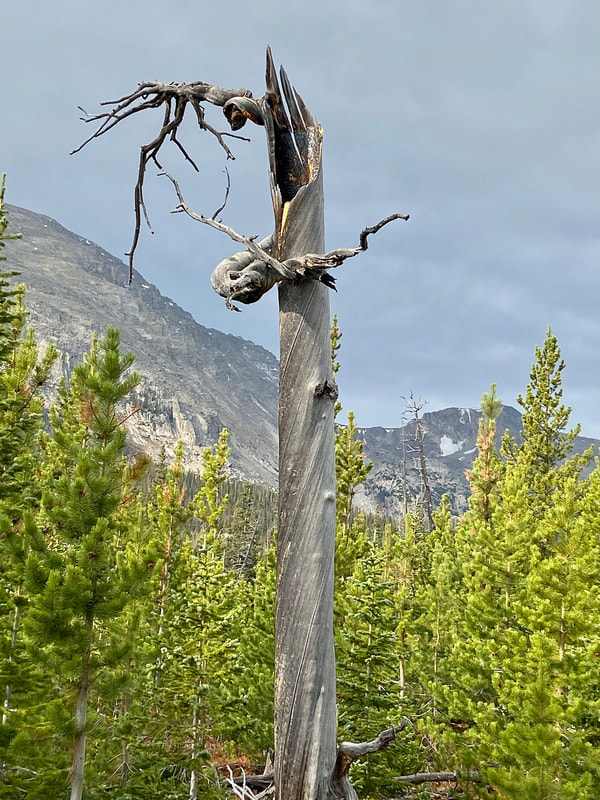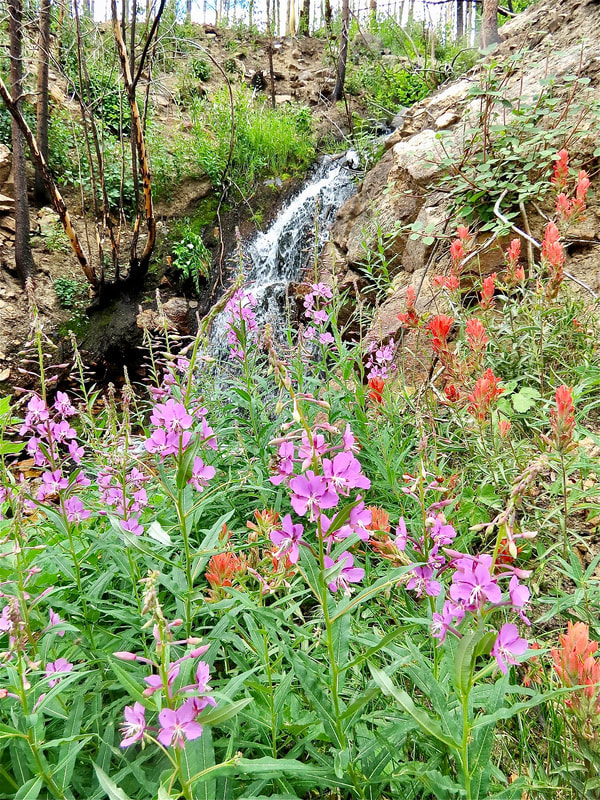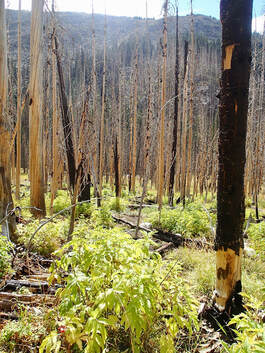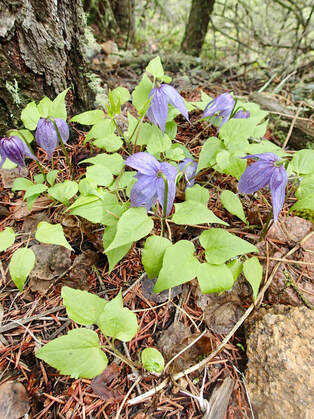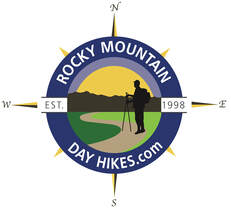|
Notes from the
Trail |
|
by Marlene Borneman In 2015 Rocky Mountain National Park celebrated its 100th birthday! Three weeks ago, I celebrated my sixty-eighth birthday. I’m learning that with the aging process comes both physical and emotional scars. I have an appendix scar, back surgery scar, in-situ melanoma scar, scar from childhood slide accident and a few other minor scars. The deaths of my parents, my sister, dear friends and a divorce left me with emotional scars. I have healed and live a rich life in spite of these scars. Rocky has it share of scars too from beetle kills, floods, fire, and even initials carved into aspen trees.
2012 there was the Cub/Spruce Canyon fire. Rocky has a lot of dead, decaying trees building up fuels but not contributing much to new growth. Fire turns them into ashes and releases nutrients into the soil, thus making the soil healthy again. Fires also destroy insects. Fires open up the canopies so sunlight once again can reach the forest floor. New plants grow providing habitat and food to various animals. I see many slopes of Lodgepole pines thickly packed in the Park not leaving much room for anything else to thrive. Lodgepole pines even need fire for their own survival. The Lodgepole cones are sealed with a thick resin sealing the seeds in tightly. Only very high temperatures like produced from fires can open the cones up so seeds can be dispersed. In no time seedlings start popping up in the rich soil provided by fire. New growth will happen.
0 Comments
Leave a Reply. |
"The wild requires that we learn the terrain, nod to all the plants and animals and birds, ford the streams and cross the ridges, and tell a good story when we get back home." ~ Gary Snyder
Categories
All
“Hiking -I don’t like either the word or the thing. People ought to saunter in the mountains - not hike! Do you know the origin of the word ‘saunter?’ It’s a beautiful word. Away back in the Middle Ages people used to go on pilgrimages to the Holy Land, and when people in the villages through which they passed asked where they were going, they would reply, A la sainte terre,’ ‘To the Holy Land.’ And so they became known as sainte-terre-ers or saunterers. Now these mountains are our Holy Land, and we ought to saunter through them reverently, not ‘hike’ through them.” ~ John Muir |
© Copyright 2025 Barefoot Publications, All Rights Reserved


